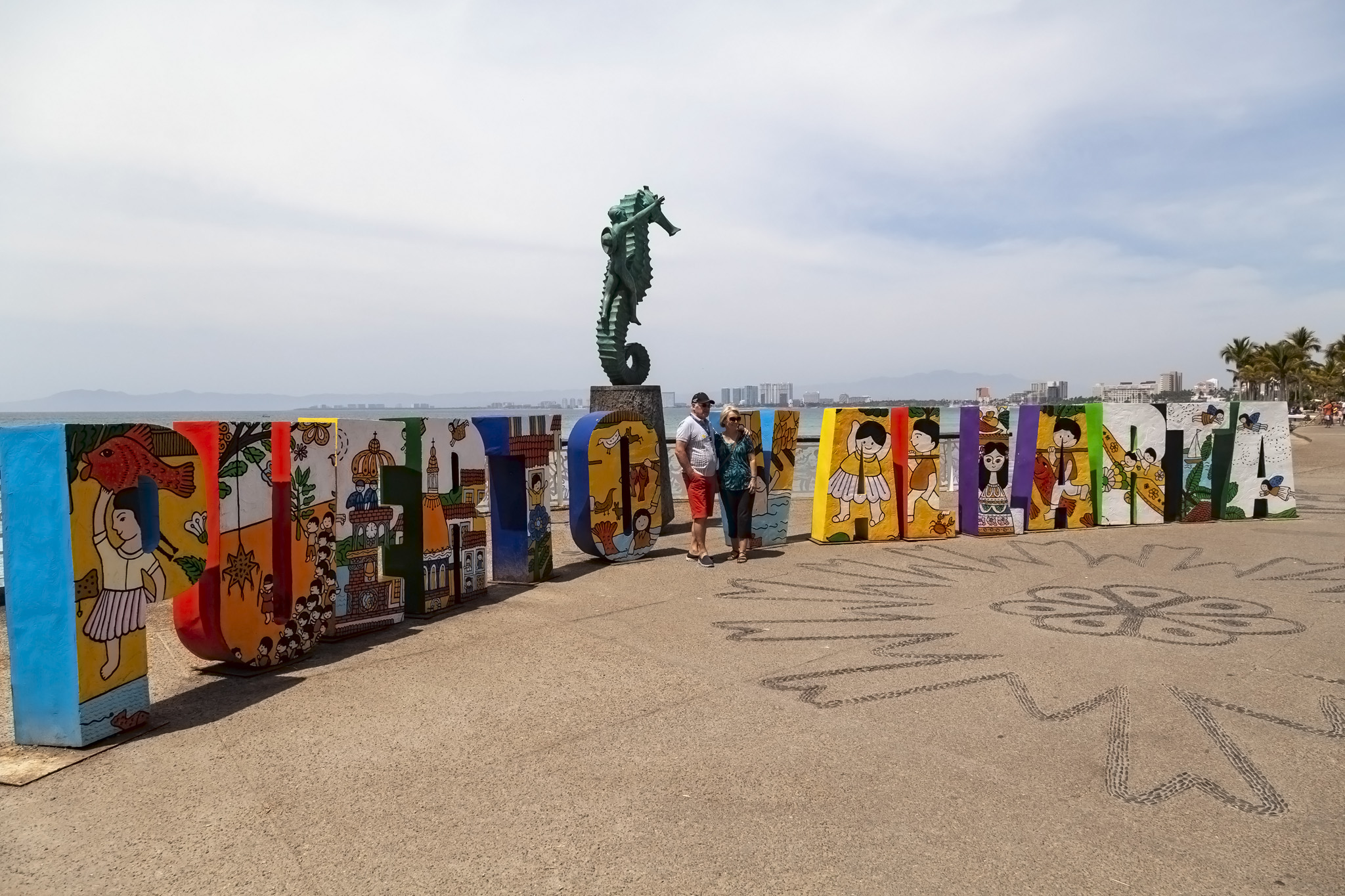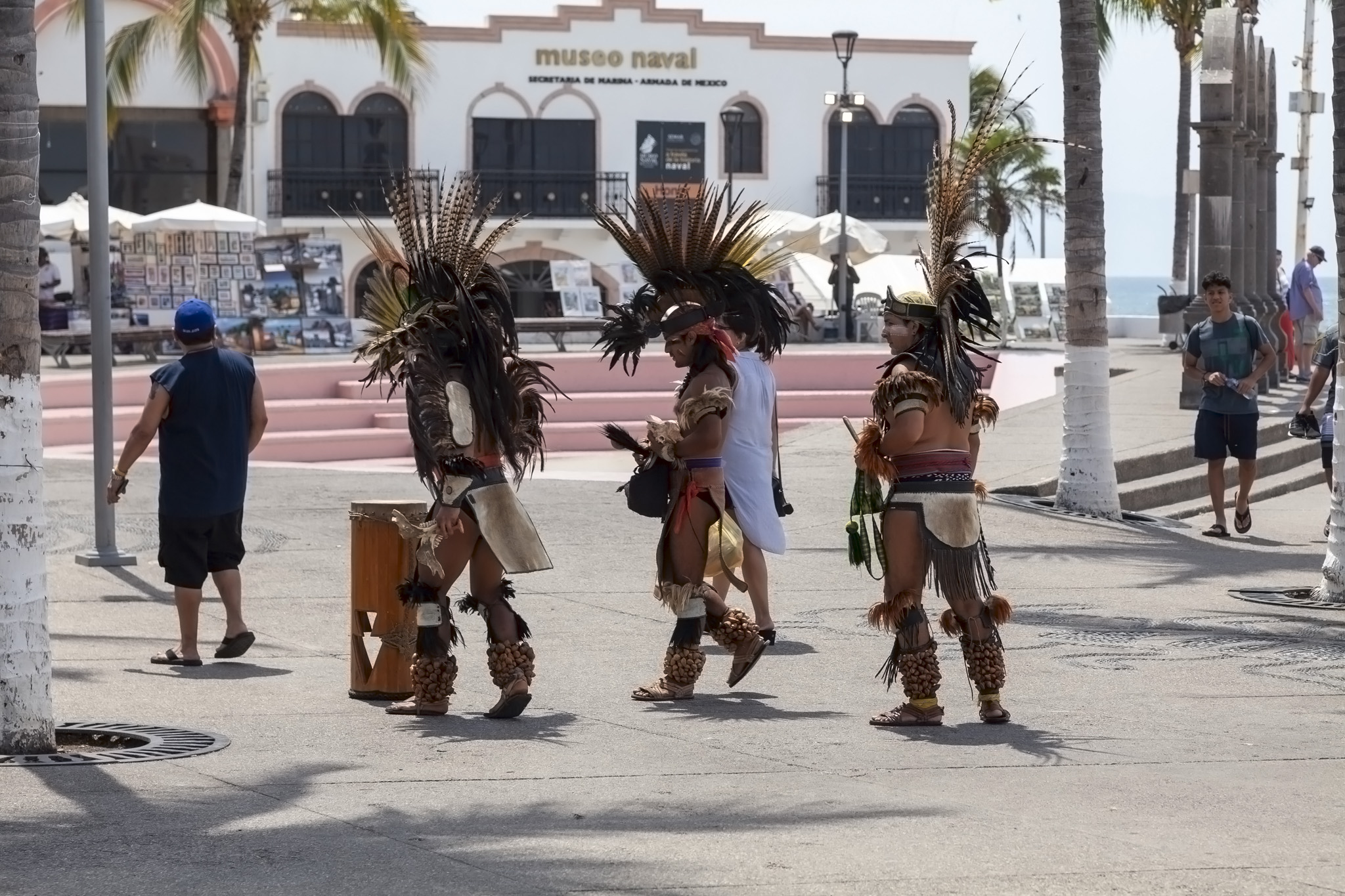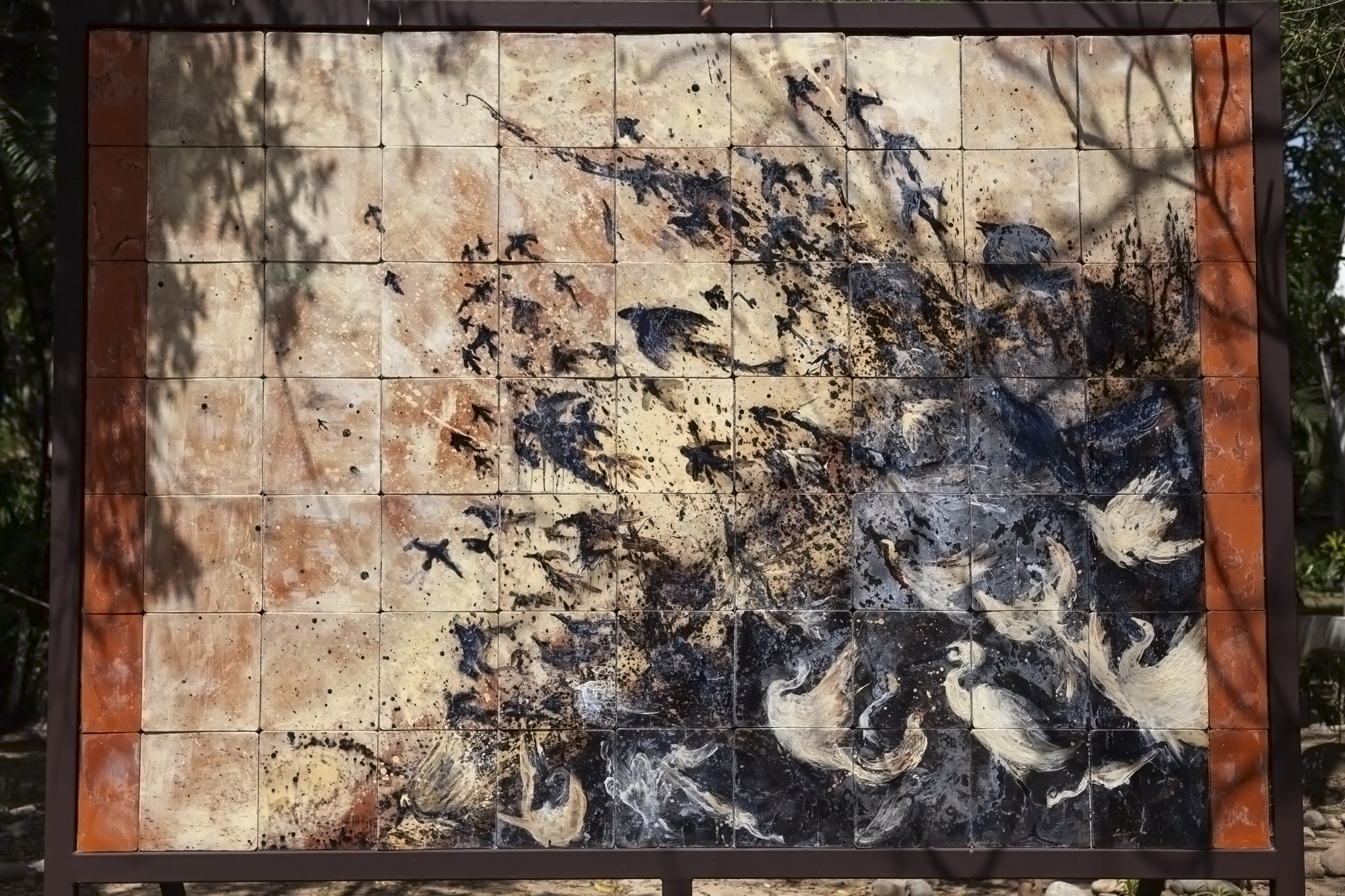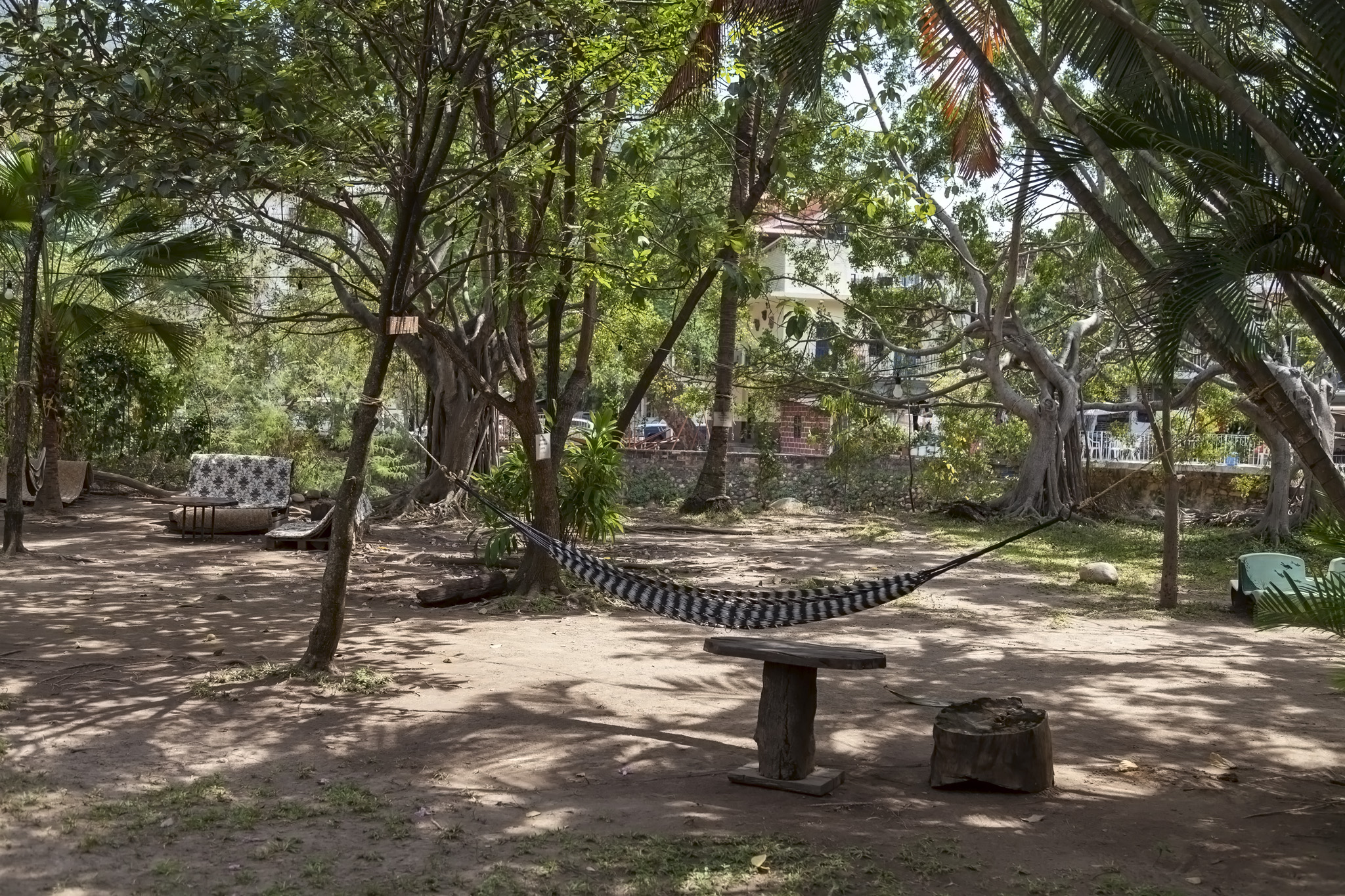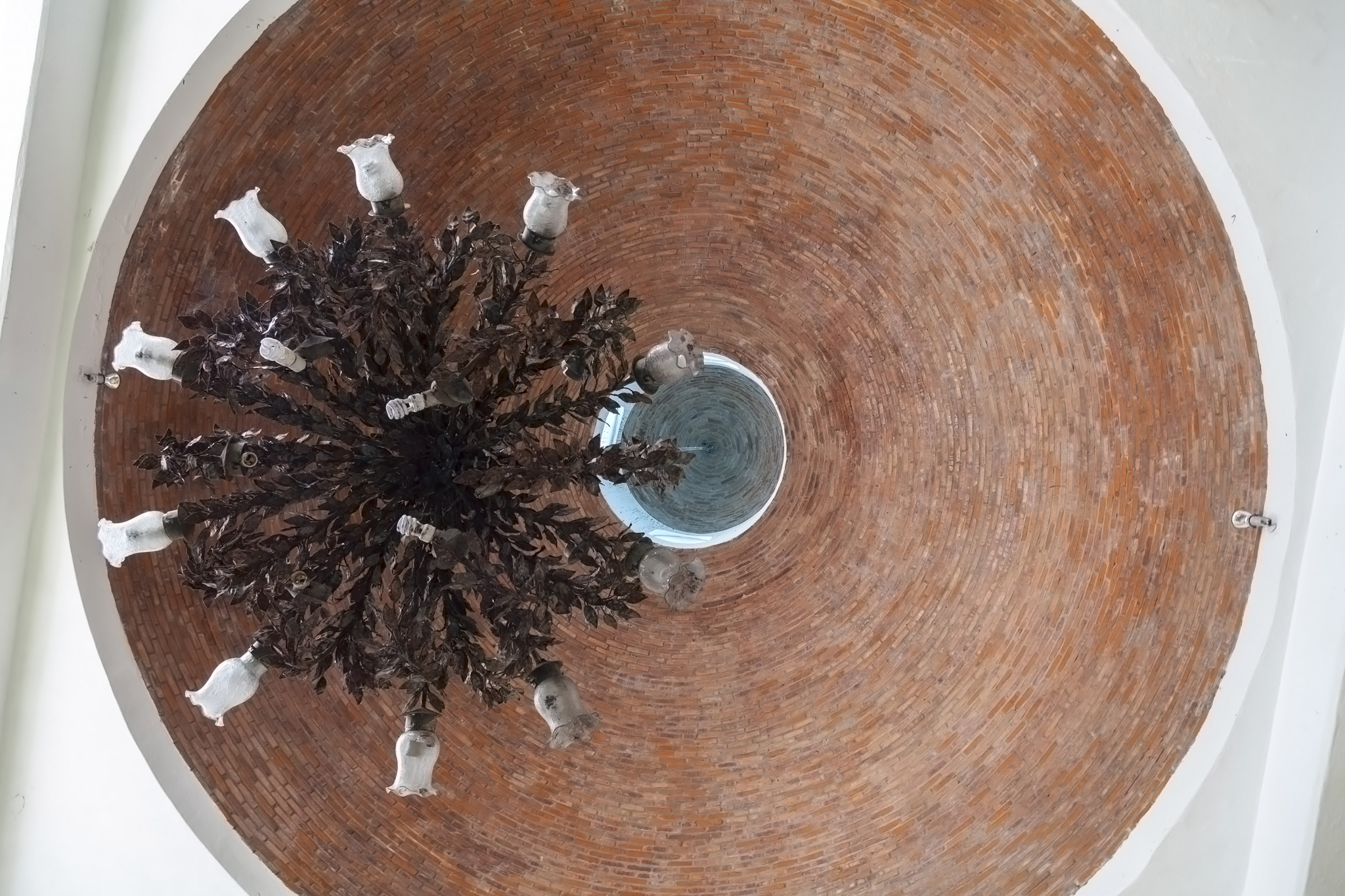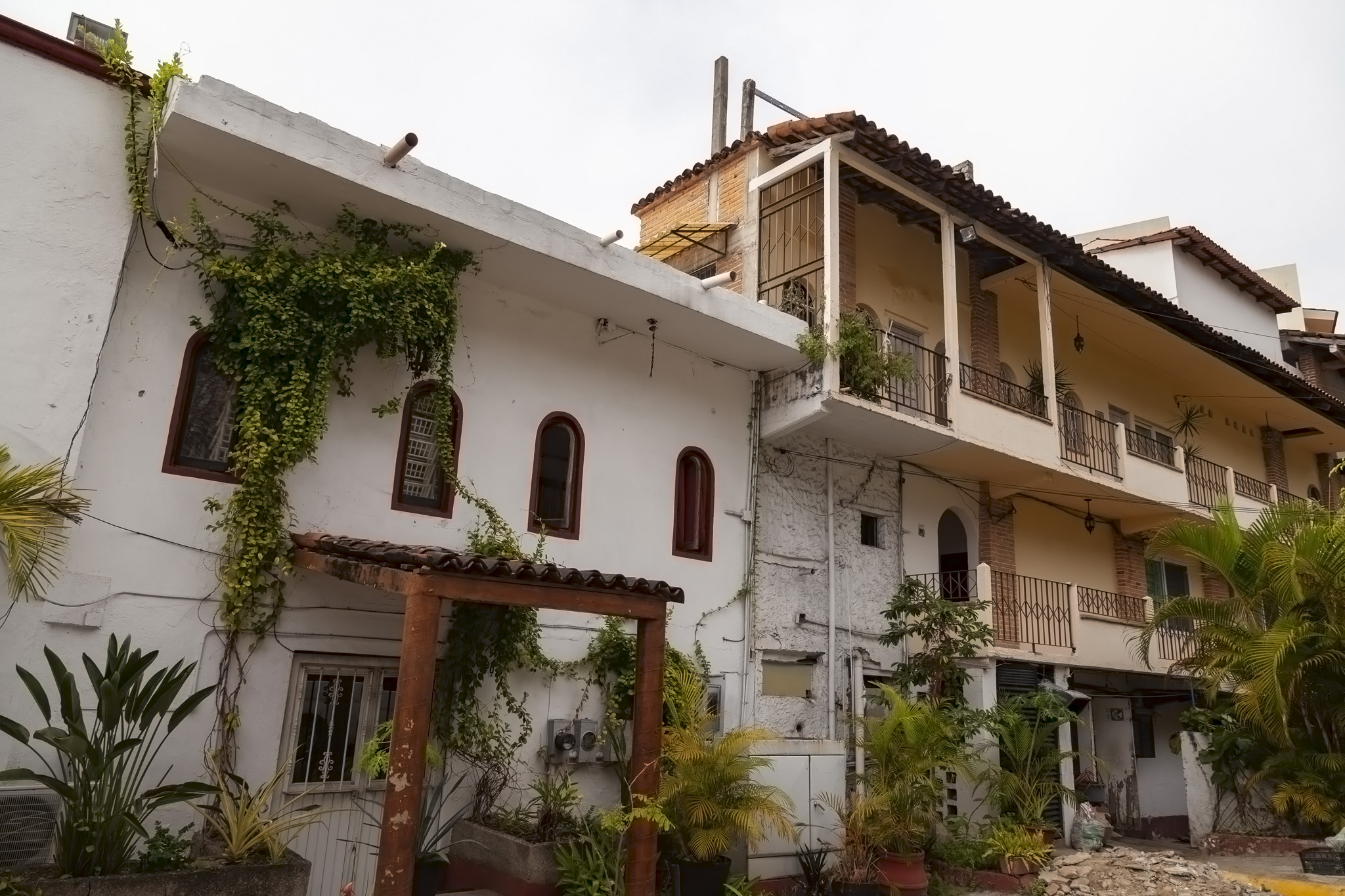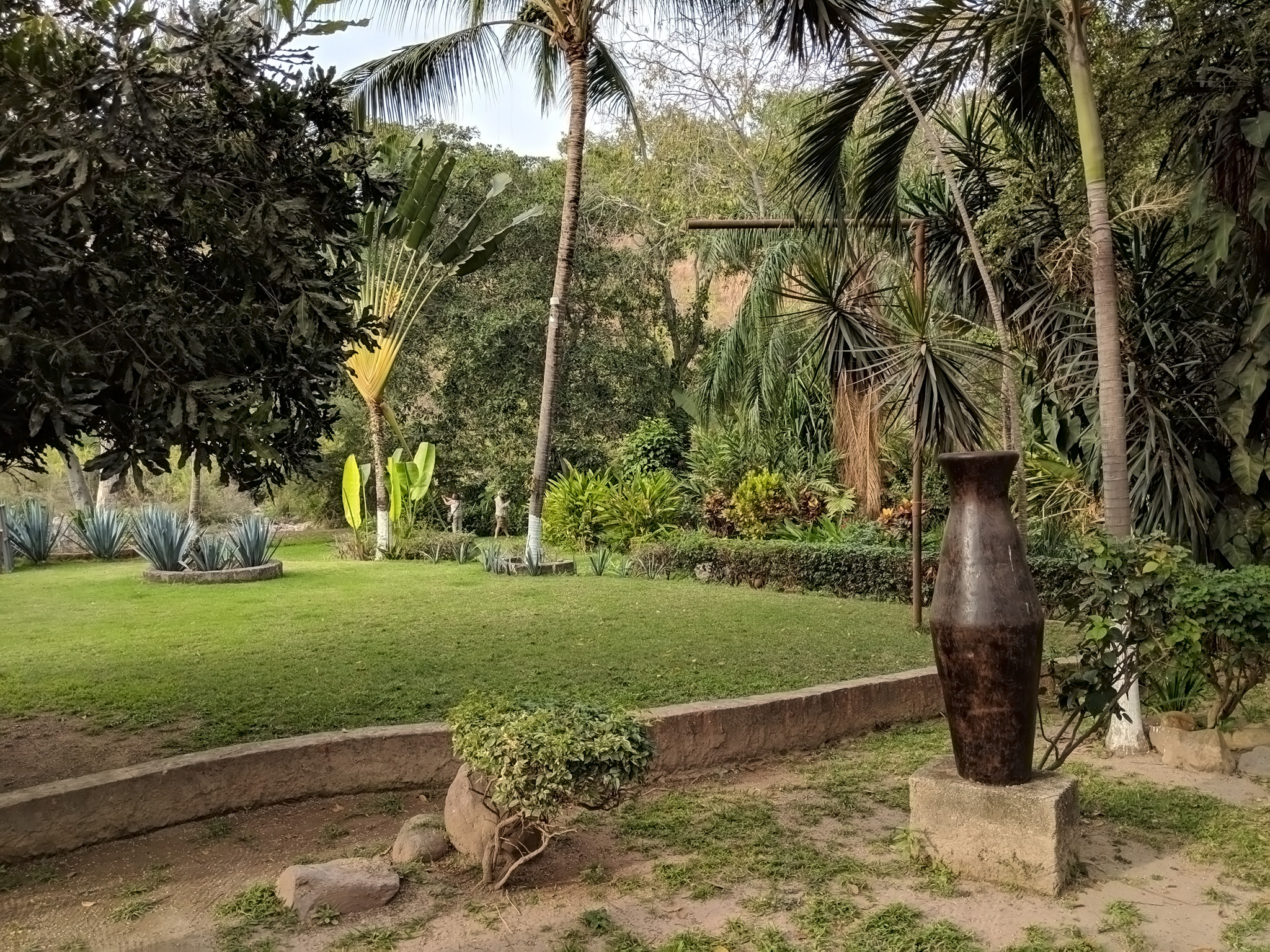Generally, we like to see a bit of culture and history when we visit a place but as this was the first time visiting Mexico for us there was one other thing on the agenda that we knew we really wanted to do: drink tequila. When we visit a new country we like to try whatever it is that country is famous for. Looking at the excursions that were available through Princess Cruises we saw one that seemed like it fit the bill perfectly for our general and specific needs; the half-day Highlights of Puerto Vallarta tour would take us to some of the key historical points of the city, finishing with a trip to a tequila distillery.
Malecón Boardwalk
The first stop was several kilometres to the south of the port, a promenade area along the coast known as the Malecón. We found our bus, got aboard, and set off as our guide started to talk a little about the city, the country, and what we could expect from the excursion as a whole: Mexico with and without make-up on. A running theme of the guide’s commentary during the day would be political digs at Americans (who made up the bulk of the tour group) and the perception of Mexicans in their media. We found it mildly amusing but I’m not sure how some of the American passengers felt about constant reminders that Mexicans aren’t all unemployed, aren’t all trying to get to America, aren’t all on drugs, don’t all walk around with guns, etc. You can hear a little of the commentary in this short clip (temporarily removed) from our bus journey to the boardwalk area.
The Malecón is a long stretch of paved walkways along the beach decorated with palm trees, sculptures, and traditional stone patterns, and off which a lot of bars, restaurants, and gathering places for public events can be found.
Our tour of Puerto Vallarta started near the lighthouse – the distinctive black-and-white-striped Faro Del Malecón – which was built in the early 1930s and operated until the late 1970s. With the amount of travelling we do by sea and the amount of ports we end up visiting we see a lot of lighthouses on our travels; this has to be one of the smallest.
It was hot, as you might expect, but there was a nice breeze coming in off the Pacific Ocean and we could see not only people taking advantage of it and enjoying some of the watersport activities that this part of Puerto Vallarta is famous for – parasailing and jetskiing and windsurfing, for instance – but also some of the local wildlife in the form of several pelicans that came swooping in close as we gathered to listen to some of the history of the area.
The indigenous people of this part of Mexico are known as the Huichol and during a remodelling of the Malecón in 2011 the promenade had decorative stone patterns placed in it to reflect their culture. You can see some of the shapes in the photos below. The different shapes typically represent living forms but I’m not very good at interpreting the shapes and suspect that the Penguin With Chest Spikes and the Cthulhu Wearing Bunny Ears probably aren’t traditional creatures in the Huichol mythos.
The most prominent aspect of the Malecón are the pieces of public artwork. You can often find temporary pieces such as sand sculptures and some fairly amateur-looking arrangements but along the length of the boardwalk are some excellent commissioned works of art too. The small area in which we wandered included Triton And Mermaid by Carlos Espino and one of the city of Puerto Vallarta’s symbols, the Boy On The Seahorse by Rafael Zamarripa Castañeda, which is located by one of those city name signs that are always popular with tourists. This is the second naked boy riding a seahorse sculpture in Puerto Vallarta, not because you can never have too many naked boys riding seahorse sculptures (although that’s very likely true), but because the original was located on a rocky outcrop that was washed away in a storm. It was subsequently found after the replacement shown below was sculpted so the city now has two.
The Zócalo, Plaza De Armas
Crossing over the main road and heading inland one block from the Puerto Vallarta city sign brought us to the city’s main square, the Plaza de Armas. This square is bedecked with plants and flowers and contains a bandstand for public performances as well as a statue of Ignacio Vallarta, a former governor and the man after whom the city was named.
Adjacent to the plaza was City Hall laid out in a traditional courtyard style. Our group took advantage of some much-needed shade from the sun inside long enough to allow those who needed to use the toilets to do so. We didn’t need to go. On the landing of the main stairwell off the courtyard is a well-known, naive-style mural representing the foundation and growth of Puerto Vallarta by local artist Manuel Lepe.
Parish Church Of Our Lady Of Guadalupe
A mish-mash of architectural styles explains the rather unique look of the city’s main landmark symbol, the Parish Church of Our Lady of Guadalupe. The impressive feature on the exterior of the building is the crown sculpture atop the tower, the official name of which is Tecuntlanopeuh. This concrete crown was placed on the church in 2009, sculpted by Carlos Terres and replacing temporary structures that themselves had replaced the original crown which had been designed by José Esteban Ramírez Guareño and been in place from 1965 until 1995 when an earthquake hit the region. You can read more about the symbolism of the crown here: The Crown of Our Lady of Guadalupe Parish.
We had a few minutes to look inside the church and were then led through the streets, roughly in a southeast direction towards the Cuale River with one brief stop in La Fuente Del Puente restaurant where we saw the first reference to a couple of Puerto Vallarta’s most famous residents of the past, Elizabeth Taylor and Richard Burton.
Isla Cuale
One of several rivers that run through Puerto Vallarta, the Río Cuale has an islet near its mouth, an area with a notable population of stray cats and the former location of lower class housing that was evacuated when flooding during a hurricane in 1971 made inhabitation too dangerous. The Isla Cuale was later transformed into a cultural site. We crossed the river onto the islet (spotting a couple of American white ibis in the shallow water) and were given a short amount of free time to explore which essentially provided for two options: westwards, towards the coast, there was a large market place; eastwards, farther inland, there was a park with local art on display. We did want to do some souvenir shopping but that’s always a lower priority than checking out artwork so eastwards we went.
In addition to a few sculptures there was plenty of street art on display on the walls of buildings on Isla Cuale. The quality and style varied but it was a pleasant walk in the shade of the trees which also helped to deaden the sound of traffic from the city. The tranquility obviously appealed to some locals who we spotted in several places sleeping.
At the eastern end of Isla Cuale was the cultural centre, an open space with buildings on three sides. This is apparently a venue for artistic and cultural events. A statue was pretty prominent, that being of the film director John Huston. Created by Carlos Ramírez, it had been erected on the 25th anniversary of the release of the movie Night of the Iguana which had been shot in Puerto Vallarta and helped to put the place on the map internationally.
The inscription on the base of the statue reads:
“We have no reason to feel any sorrow for him, only for ourselves for having lost him. He is irreplaceable. There will never be another like him.” – Huston’s eulogy for Humphrey Bogart.
It’s quite an odd inscription given Bogart wasn’t in the movie.
We had enough time before our bus arrived to pop into a shop selling typical things any tourist visiting Mexico might want to buy. We were any tourists so we came away with a small calavera because it’s a pretty standard thing to pick up as a souvenir and occasionally we like to be pretty standard just to break the monotony of being exceptional.
Silver Shopping In Puerto Vallarta
A short bus ride took us to the dedicated shopping part of this excursion, a store called Jewelry Aviles. It’s not a place with great reviews on TripAdvisor but we had no problems there. We all had a welcome drink on arrival which might have been lemonade and might have been alcoholic. It was nice, whatever it was; that was the important thing. The store itself offered artisan jewellery pieces in one area and more conventional souvenir shopping next door and there was a toilet for customer use that saw a lot of action from our tour group. We didn’t need to go.
Prior to the cruise my wife had expressed an interest in buying some silver in Mexico because that’s something she claimed it’s famous for. I didn’t bother to check if that was true because if my wife wants some silver then silver she shall have no matter what fantastical tale of renowned elements around the world she concocts to explain away her desires. She picked up a silver skull to add to her charm bracelet.
El Set Restaurant
This Puerto Vallarta tour was short enough that food was not included but our next stop did take us to a restaurant. The bus headed south for another couple of kilometres until we reached El Set. On the cliffside overlooking the Pacific Ocean this was a very attractive venue offering some gorgeous views if you were to eat here and coming with some local history too, naturally, as it had been a favourite place for Richard Burton and Elizabeth Taylor to dine at during the filming of Night of the Iguana. Facing west it’s easy to imagine how spectacular the sunsets must be. Reminders of the movie and the famous diners of the past was present and there was even one of the actual film cameras from the movie shoot on the upper terrace.
One of my most favourite travel experiences ever (so far) occurred during our visit to El Set in Puerto Vallarta. Our group had some time to nose around the restaurant so some people were on the main floor, some were probably seeing if they could get another coffee fix in the restaurant, some were doubtlessly making use of the toilets again (we didn’t need to go), and some were admiring the views out to sea. There were about a dozen or so of us doing the latter activity and while all eyes were distracted elsewhere I glanced to the right where a building a little farther along the coast had a gazebo with a low glass wall. Two men – probably in their late 50s or early 60s – were laughing and making some mildly obscene gestures at our group, none of whom bar me were looking in the right direction. I was prepared to ignore them until one suddenly dropped his shorts and mooned us. The good thing about my camera is I can have the camera resting in my hand to up and shooting in a fraction of a second and I did. The mooning guy’s companion spotted me and laughed and started speaking to his friend who quickly whipped his shorts back up and shuffled away, obviously not expecting to be caught. I smiled and gave the thumbs up to the man who’d spotted me and got a thumbs up back from him. I looked back at our tour group and nobody else had seen a thing. A fabulous moment to experience.
Quinta Las Rosas Garden And Río Bendito Tequila Distillery
We would now be experiencing what our guide described as “Mexico without the make-up” as the final part of our tour took us northwards and away from the shoreline to Quinta Las Rosas, an events location set in some attractive gardens beside a river. While the venue itself would be pretty we would be travelling through a considerably poorer part of Puerto Vallarta to get there.
We very quickly saw a change in the buildings and apparent standards of living but our guide was at pains to point out that things weren’t quite how they looked. Building regulations were pretty much non-existent and the only requirement was to have a water tank connected to the city’s supply so that the risk of everyone trying to use the water supply at the same time could be removed. Mortgages were also apparently not something that really existed so people tended to build when they had saved the money and bought the materials, and stopped when they didn’t. Houses could look a little unfinished as a result but, we were told, inside them it was perfectly typical to find the latest TVs, the best computers, high speed internet, etc. because Mexicans liked their luxuries while the outside appearance didn’t really matter. It was at this point that my wife and I wondered whether we might have Mexican blood in us.
You can see some of the buildings and hear some of the commentary from our tour guide in this short clip (temporarily removed) of our bus ride towards Playa Grande where Quinta Las Rosas was located.
Quinta Las Rosas was a lovely little spot, a great location for weddings or conferences, although you might want to have a word with the venue’s owners if you’re thinking of doing either of those things but don’t like the idea of chickens running around. Quite a few kids riding horses bareback trotted through occasionally too.
The thing we’d really come for, though, was the tequila-tasting operated by Río Bendito which took place after we’d had a tour of the area and an explanation of the distilling process. As much as I like to drink alcohol it never ceases to amaze me how people first came up with the idea of making it.
Several buses had arrived at Quinta Las Rosas at roughly the same time for the tequila explanations and tastings and there were benches lined up in several spots around the garden. We were pleased that we had the only spot under cover as I’m not sure whether what came next would have been quite as enjoyable had the sun been beating down on us during it. Small plastic cups were handed out to everyone and we were then given very small measures of eight different tequilas, four of them flavoured liqueurs; descriptions of the drink, a toast, and drinking then occurred for each of them in turn. I don’t mind tequila in a drink but it’s usually with a mixer rather than neat while my wife is proud to say she hates the stuff. You might be wondering why we wanted to do the tasting at all but when in Mexico as they say, and part of the appeal of travelling for us is experiencing what other cultures get up to even if that means putting up with a little discomfort every now and then.
Not only were all the tequilas surprisingly lovely – even their most basic one with the shortest ageing was smooth with none of that harsh taste we normally associate with tequila – but we decided to pick up a bottle of their longest aged product as it’s the only one they apparently don’t export. Had to be done.
We had time at the end of the tasting to have a wander around the garden a little more and for anyone who wanted to use the toilet to do so. We finally needed to go. A young boy was doing a roaring trade getting dollar tips for effectively handing people paper towels from the pile supplied to dry their hands after using the facilities. Fair play.
That brought our half-day Highlights of Puerto Vallarta tour to an end and all that remained was to jump back on the bus and make our way back to the port where Star Princess was waiting for us. You can see a little bit more of the buildings and the way the landscape changes on the journey back as well as hear a few more bits of information (as well as one final dig about stereotypical misrepresentation from the American media and the country’s current president) from our guide in this final (temporarily removed) short video clip.
This was a very good tour, very well-priced, with plenty packed into its relatively short duration. Puerto Vallarta was a lovely city and the areas along the Malecón and around Isla Cuale in particular look like they have plenty to keep a visitor occupied. Even the less touristy areas through which we drove felt safe and looked to be full of character and it’s a place we’d have no hesitation in recommending or revisiting ourselves, or possibly even moving to if it turns out we really do have Mexican heritage.
















